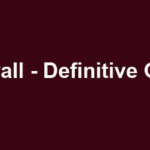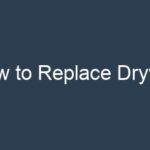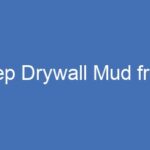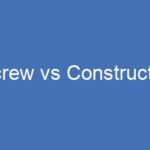When it comes to patching drywall and trying to match the existing texture, the process can be quite challenging. There are numerous factors to consider, making it tricky to ensure a seamless blend between the new drywall patch and the surrounding texture. Here, we present five essential tips that apply to all types of drywall textures. If you follow these tips diligently, you can significantly improve your chances of creating a flawless drywall patch.
Tip 5 – Choose the Right Drywall Thickness
Ensuring the same thickness of drywall for your patch as the existing layer is crucial. This ensures that the final levels of both the new drywall patch and the surrounding drywall match perfectly. Start by measuring the thickness of the existing drywall and use the same size drywall for your patch. If the original ceiling used 1/2 inch drywall, use 1/2 inch drywall for your patch. If it employed 5/8 inch drywall, opt for 5/8 inch drywall for your patch.
However, if you’re dealing with patching plaster walls, it becomes a bit more complex. Plaster may not have an exact half-inch or five-eighths-inch thickness. In such cases, you may need to use shims to elevate your new drywall patch to match the surrounding plaster wall’s level. Thin wooden shims or folded paper of the appropriate thickness can be placed behind your new drywall patch to achieve an even level.
Tip 4 – Minimize Coating on Existing Texture
After installing the drywall patch, you’ll need to tape and coat it to ensure a seamless blend with the surrounding surface. Apply mud to the original texture surrounding your patch, being careful to minimize the coating on the existing texture as much as possible. Your goal is to keep a flat transition between the patch and the surrounding surface while using as little coating as necessary.
While maintaining a flat transition is essential, keep in mind that the less re-texturing you need to do, the easier it will be to control your new texture and achieve a better match between the two textures.
Tip 3 – Eliminate Visible Lines Between Patch and Texture
During the coating process of your drywall patch, a visible line often appears at the edge of your patch within the existing texture. When working on a smooth surface, you can usually feather this line out to make the new coating seamlessly blend into the smooth surroundings. However, when dealing with textured surfaces, it’s challenging to completely feather out this line due to drywall mud getting trapped in the texture’s crevices.
Before applying the final coat on your drywall patch and texturing, make sure to remove excess mud trapped within the existing texture on the edge where your final coat meets the existing texture. Some professionals use a drywall knife to carefully remove drywall mud from strategic areas to create a more random transition. Others have found success with a slightly damp, soft bristle brush to blur the line between old and new textures.
The objective is to create a random transition between the existing drywall patch and the surrounding texture, avoiding a harsh contrast between the smooth new drywall patch and the existing texture.
Tip 2 – Match Methods and Tools for Texture
Matching the methods and tools used for the original texture is crucial. The ability to determine these depends on the specific texture you are trying to match. For instance, matching a Stomp Knockdown Texture is relatively easy, as there are limited types of stomp brushes typically used, and the pattern of the stomp brush can indicate the type of texture.
Matching a texture applied by hand can be more challenging, as methods and tools used can vary widely based on the region and individual tradesman’s style. Hand textures are often unique to each person’s technique.
When dealing with sprayed textures like Splatter Knockdown Texture, Orange Peel Drywall Texture, or Spray Acoustical Popcorn Texture, identifying the original tools and methods is challenging. While you can recognize that the original texture was applied with a hopper or spray rig, determining exact air pressure, force, and nozzle size can be difficult.
Matching spray textures is especially challenging due to various contributing variables. Therefore, controlling all possible factors is crucial when applying texture to a drywall patch to achieve a close match to the original.
Tip 1 – Match the Consistency of Drywall Mud
Matching the consistency of the drywall mud used for the original texture is perhaps the most challenging but also the most critical factor. The viscosity of the mud plays a significant role in determining the final texture pattern, making it the key to the success of your patch. Even if you follow the other tips meticulously, using mud that is either too thick or too thin will be visibly evident in the texture.
Exact consistency matching is challenging, often requiring an educated guess. To become proficient in matching mud consistency, you need hands-on experience. Mixing various types of texture mud and applying different texture styles will give you the necessary experience. It will enable you to assess the original mud’s thickness by simply looking at the texture.
If you lack experience in matching drywall texture, take your time during this step. Apply texture to a small area and scrutinize it carefully. Try to visualize how it will appear when the texture dries. Let it set for a few minutes, as textures can change as they dry. If you feel that your texture isn’t matching perfectly, remove the applied texture, add a bit of water, and try again. Taking your time with consistency is essential for a successful outcome.
For sprayed textures on larger jobs that originally used powdered texture mud mixed on-site, extra care is required to recreate the same size and distribution of texture blobs when using pre-mixed drywall mud.
Wrapping Up
Matching drywall textures is one of the most challenging aspects of making repairs. It requires experience with various textures and techniques to quickly and effectively find the right match. By following the steps outlined above, even beginners can achieve a decent match with existing textures. At a minimum, focus on tips 5, 4, and 3. If you can master tips 2 and 1, you’ll be well on your way to flawlessly matching drywall texture patches.
tag: # 5 Tips for Matching Drywall Texture







